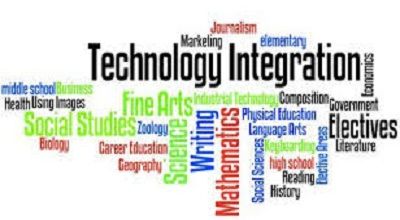Technology Integration Examples
Technology Integration refers to the incorporation of technology into various aspects of an organization, educational institution, or daily life to enhance productivity, efficiency, and effectiveness. Here are some examples of technology integration across different domains and the associated benefits:
1. Education:
- Smartboards and Interactive Displays: Teachers use interactive whiteboards and displays to engage students with dynamic lessons and multimedia content. This improves student engagement and understanding.
- Online Learning Platforms: Schools and universities use learning management systems (LMS) to deliver courses, assignments, and assessments online, enabling flexible learning opportunities.
- EdTech Apps: Mobile apps and educational software help students practice and reinforce concepts, making learning more interactive and personalized.
Benefits in Education:
- Improved student engagement and retention.
- Access to a wide range of educational resources.
- Personalized learning experiences.
- Enhanced collaboration and communication among students and educators.
2. Healthcare:
- Electronic Health Records (EHRs): Medical professionals use EHR systems to store and manage patient data electronically, improving accuracy and accessibility.
- Telemedicine: Patients can consult with healthcare providers remotely through video calls and online platforms, increasing access to medical care.
- Medical Imaging Technology: Advanced imaging technology such as MRI and CT scans provides clearer diagnostic images for better patient care.
Benefits in Healthcare:
- Faster and more accurate diagnoses.
- Improved patient data management.
- Enhanced remote patient monitoring.
- Greater access to healthcare services.
3. Business:
- Enterprise Resource Planning (ERP) Systems: Companies use ERP software to streamline business processes, including finance, inventory management, and human resources.
- Cloud Computing: Cloud services offer scalable and cost-effective solutions for data storage, collaboration, and software deployment.
- Customer Relationship Management (CRM): CRM systems help businesses manage customer interactions, sales, and marketing efforts more efficiently.
Benefits in Business:
- Increased operational efficiency.
- Data-driven decision-making.
- Improved customer relationships and sales.
- Cost savings through automation and cloud services.
4. Manufacturing:
- IoT (Internet of Things): Manufacturers use IoT devices to collect data on machinery and processes, enabling predictive maintenance and quality control.
- Robotics and Automation: Robots and automated systems improve production efficiency and reduce errors.
Benefits in Manufacturing:
- Reduced downtime and maintenance costs.
- Improved product quality and consistency.
- Increased production capacity.
5. Home and Lifestyle:
- Smart Home Devices: Homeowners can control lighting, security, and appliances remotely using smartphones or voice commands.
- Wearable Technology: Devices like smartwatches track health metrics, provide notifications, and offer fitness insights.
Benefits in Home and Lifestyle:
- Increased convenience and energy efficiency.
- Better health monitoring and personalization.
Note:
Technology Integration offers a multitude of benefits across various sectors, including increased efficiency, improved access to information, enhanced collaboration, and better decision-making. It can significantly impact the way organizations operate and individuals live their lives.
